Craving the ultimate burnt Basque cheesecake recipe? This rustic Spanish classic delivers a caramelized top and luxuriously creamy center with zero fuss.
Imagine a cheesecake that defies convention—intentionally scorched on top yet unbelievably creamy inside. This Basque beauty rises dramatically like a soufflé, then collapses into a custardy center with a caramel‑tinted crown. One bite and you’ll understand its cult status.
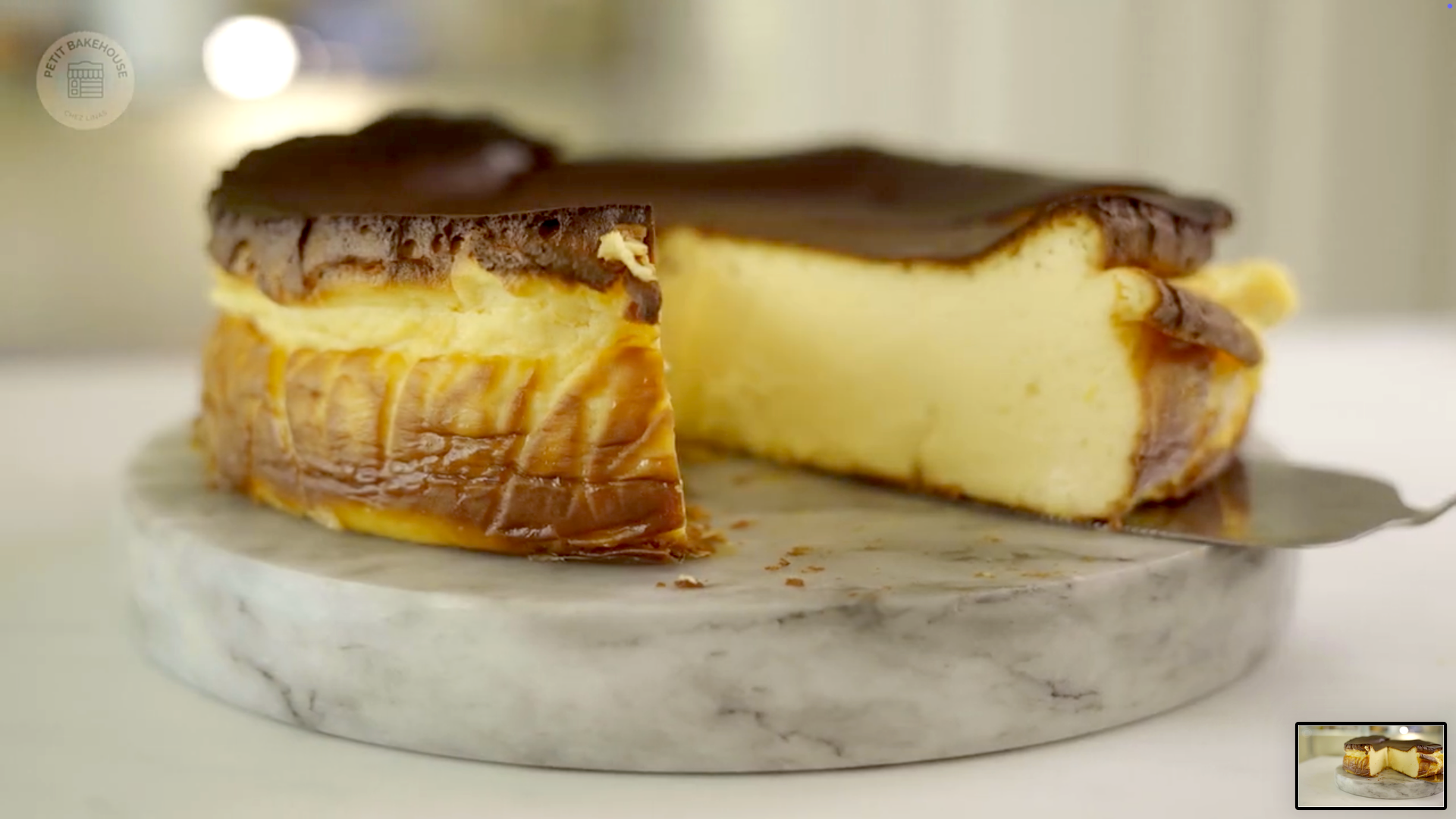
Basque cheesecake was created in the 1990s at La Viña bar in San Sebastián, Spain. With no crust, high heat, and simple ingredients, it became famous for its rustic look and sublime texture—half flan, half cheesecake, entirely irresistible.
Why This Basque Cheesecake Recipe Works
- High‑Heat Bake delivers the signature burnt exterior while leaving the core silky and jiggly.
- Room‑Temperature Ingredients ensure a lump‑free batter and even baking.
- Heavy Cream + Cream Cheese create an ultra‑rich custard that sets without a water bath.
- Minimal Flour provides just enough structure so the cake slices cleanly yet melts on the tongue.
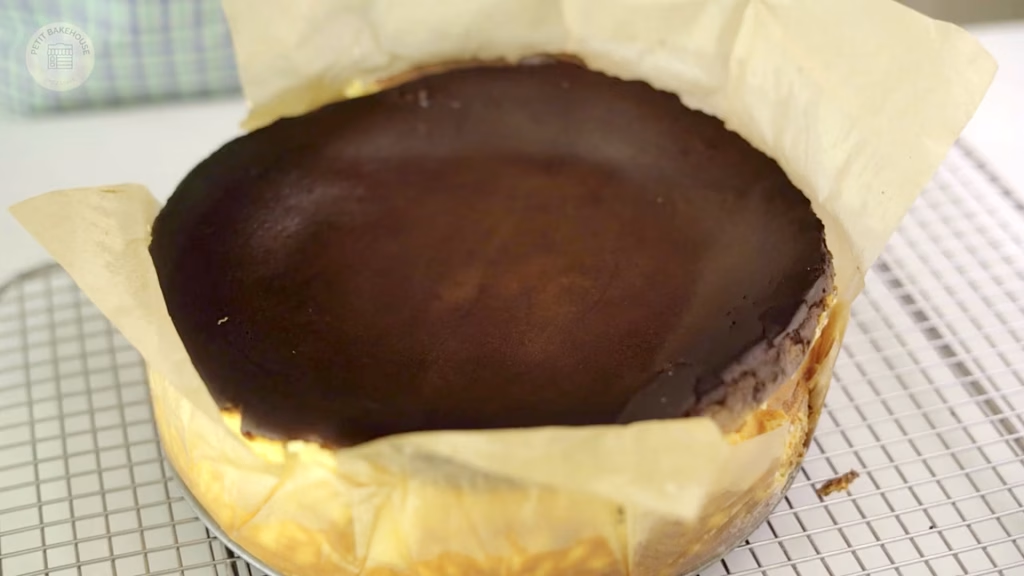
Key Ingredients for Perfect Basque Cheesecake
| Ingredient | Role in the Cake |
| Cream Cheese (1 kg) | Main body; adds tang and creaminess. |
| Granulated Sugar (300 g) | Sweetens and caramelizes on top. |
| Heavy Cream (480 ml) | Lightens the texture; prevents dryness. |
| Eggs (5 large) | Bind and thicken the custard. |
| All‑Purpose Flour (30 g) | Tiny bit of structure so slices hold. |
| Lemon Zest | Brightens the rich filling. |
| Vanilla (2 tsp) | Rounds out flavors. |
| Salt Flakes (¼ tsp) | Balances sweetness and enhances depth. |
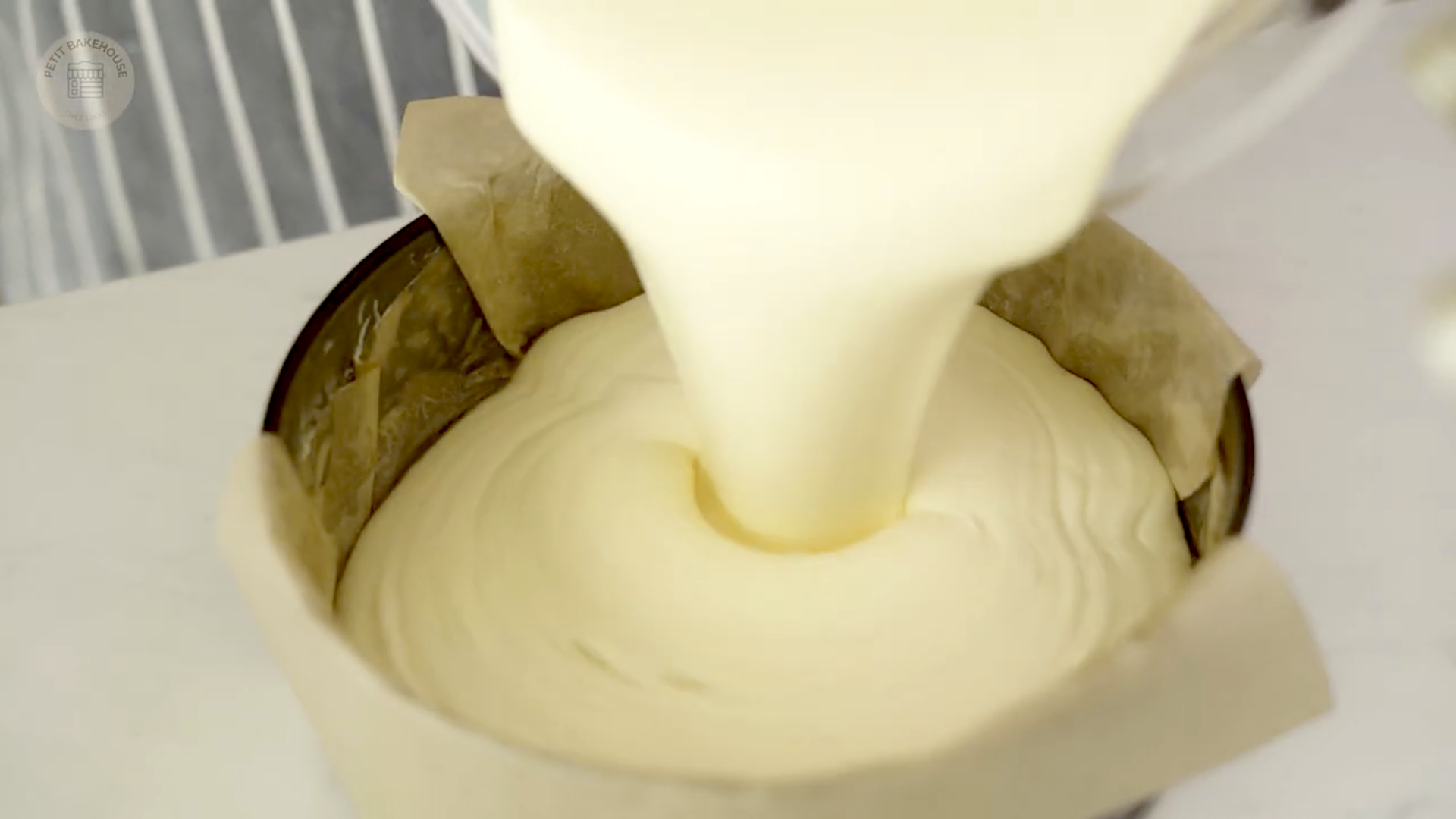
Let’s Bake!
Rich, creamy, and delightfully burnt—this classic Basque Cheesecake is effortlessly elegant and perfectly rustic. Here’s everything you need to create your own at home.
Burnt Perfection: Classic Basque Cheesecake
Equipment
- 9 to 10 inch (22 to 25 cm) springform pan, buttered and lined with parchment paper
Ingredients
- 2¼ pounds (1 kg / 36 oz) Cream cheese, at room temperature
- 1½ cups (300 g) Granulated sugar (add slightly more if you prefer extra sweetness)
- Lemon zest from 1 organic lemon
- ¼ tsp Sea salt flakes or kosher salt
- 5 large eggs
- 2 cups (480 ml) Heavy cream
- ¼ cup (35 g) All-purpose flour, sifted
- 2 tsp Vanilla extract
Instructions
- Preheat your oven to 400°F (200°C) with a rack in the center. Butter a 10-inch (24 cm) springform pan, then line it with parchment paper, leaving an extra 2 inches (5 cm) inches hanging over the sides.
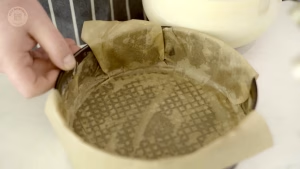
- Using a stand mixer with the paddle attachment, handheld mixer, or wooden spoon, beat the cream cheese and sugar until completely smooth and creamy.
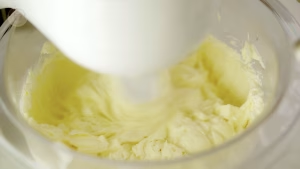
- Add the salt, lemon zest and vanilla.
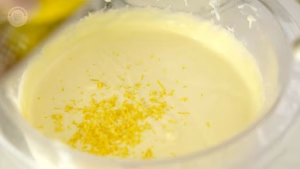
- Incorporate the eggs one at a time, beating well after each addition.
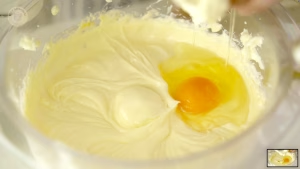
- Mix in the heavy cream until just combined. Carefully sift the flour evenly over the batter, mixing gently on low until smooth.
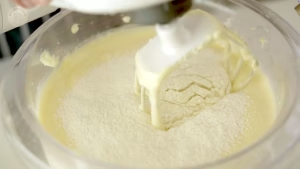
- Pour the batter into the prepared pan and bake for 50–60 minutes. The cheesecake should rise significantly, develop a deep golden brown (almost burnt) top, and retain a jiggly center.
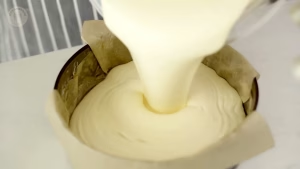
- Remove from the oven and allow it to cool completely on a rack. The cheesecake will sink slightly in the center—this is normal and desirable.
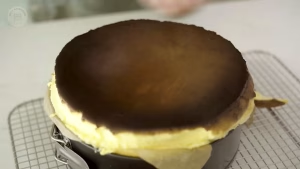
- Remove the sides of the springform pan and gently peel away the parchment paper. Serve at room temperature.
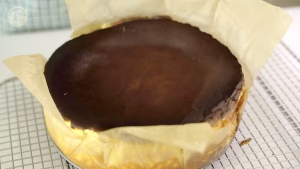
Video
Do You Need a Water Bath for Burnt Basque Cheesecake?
Short answer: no. Traditional New York–style cheesecakes rely on gentle steam to prevent cracking, but the Basque version bakes hot and fast to create its trademark burnt top. A water bath would lower the oven temperature and soften that caramelized exterior, robbing the cake of flavor and character. Instead:
- High Heat (400 °F / 200 °C) encourages rapid rise and browning.
- Parchment Lining cushions the sides so they don’t scorch.
- Residual Steam from the batter’s moisture is enough to keep the center creamy.
If you’re worried about over‑browning, tent the cake with foil for the last 10 minutes instead of adding a water bath.
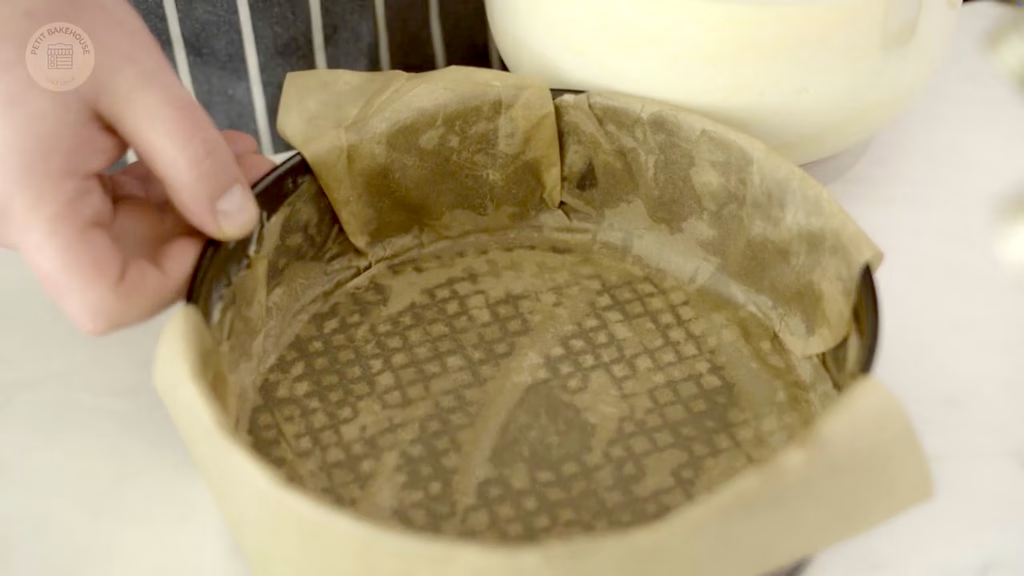
Expert Baking Tips & Troubleshooting
- Top Too Pale? Move pan to upper rack for last 5 minutes or broil briefly—watch closely!
- Center Set Too Firm? Reduce bake time by 5 minutes; residual heat continues cooking.
- Leaking Pan? Double‑wrap base in foil or place on a rimmed sheet to catch drips.
- Lumpy Batter? Always start with room‑temperature cream cheese and eggs.
Best Pan Size & Parchment‑Lining Tips
- Pan Diameter: A 9–10 inch (23–25 cm) springform produces the classic low, wide look. An 8‑inch (20 cm) pan yields a taller cake—add 5–10 minutes to bake time.
- Springform vs. Cake Ring: Springforms are easier; a cake ring set on a sheet tray works too—just clamp parchment around the base.
- Double Parchment Overhang: Cut a circle for the bottom, then press a larger sheet inside so it creases naturally, leaving 2–3 inches above the rim to support the rise.
- Grease Lightly First: A quick butter swipe sticks parchment to the pan and prevents shifting.
- Catch Drips: Place the pan on a foil‑lined baking sheet—Basque batter is very fluid and may ooze.
Storage & Serving Suggestions
- Refrigerate: Cover and chill up to 4 days. For best texture, let slices stand 20 minutes before serving.
- Freeze: Wrap individual pieces; freeze up to 1 month. Thaw overnight in the fridge.
- Serving Ideas: Enjoy plain, dust with powdered sugar, top with fresh berries, or drizzle with honeyed figs.
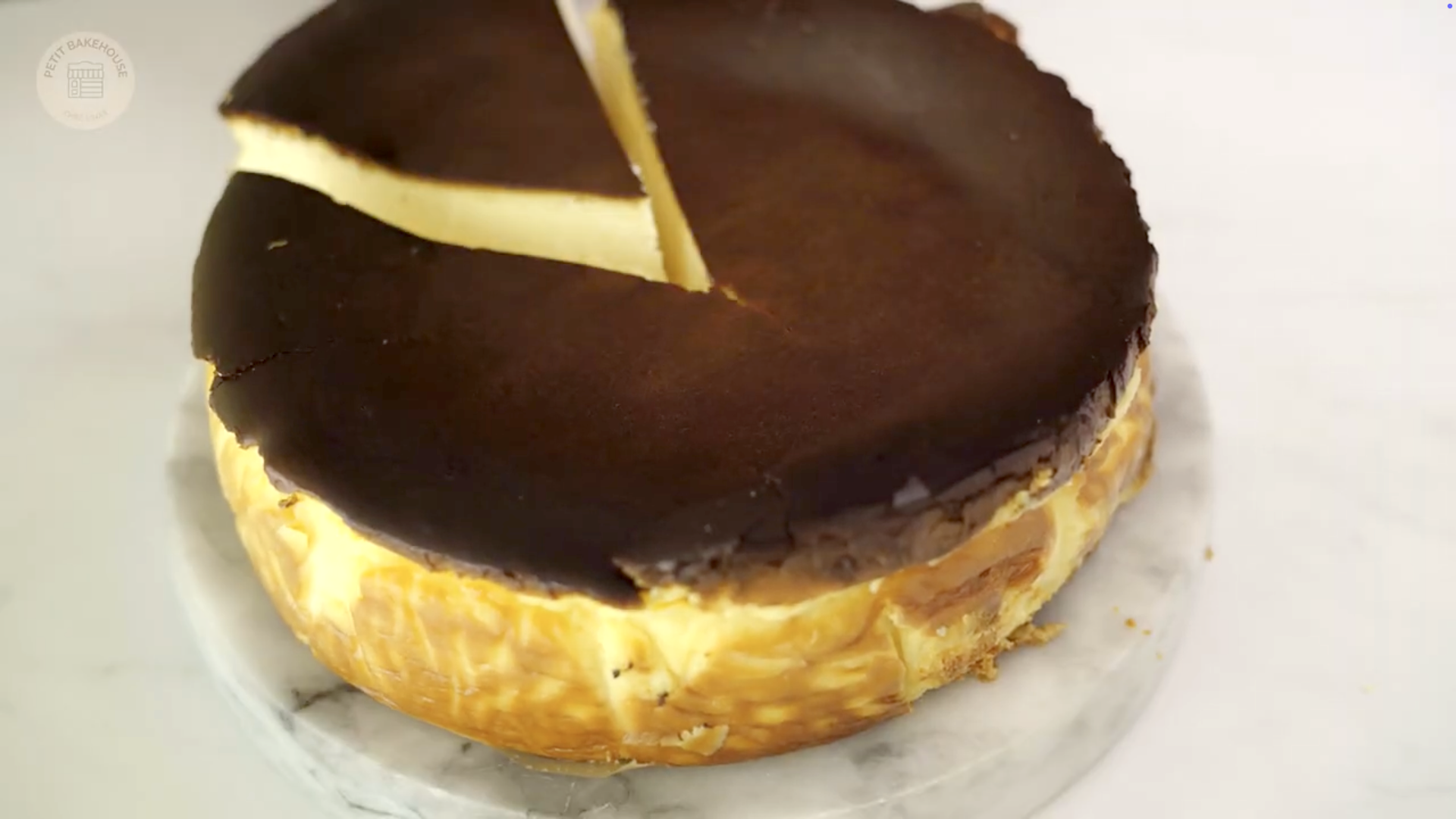
FAQs About Basque Cheesecake
- Can I use low‑fat cream cheese? Full‑fat is highly recommended; lower fat compromises texture.
- Can I bake in a smaller pan? Yes—an 8‑inch (20 cm) pan will yield a taller cake; add 5–10 minutes to bake time.
- Is a water bath necessary? No. The high heat plus parchment lining replace the need for steam.
- Why is my cheesecake leaking grease? Over‑beating can separate fat; mix just until smooth and combined.
Enjoy the rustic elegance of this timeless Basque cheesecake—burnt on the outside, blissfully creamy within!
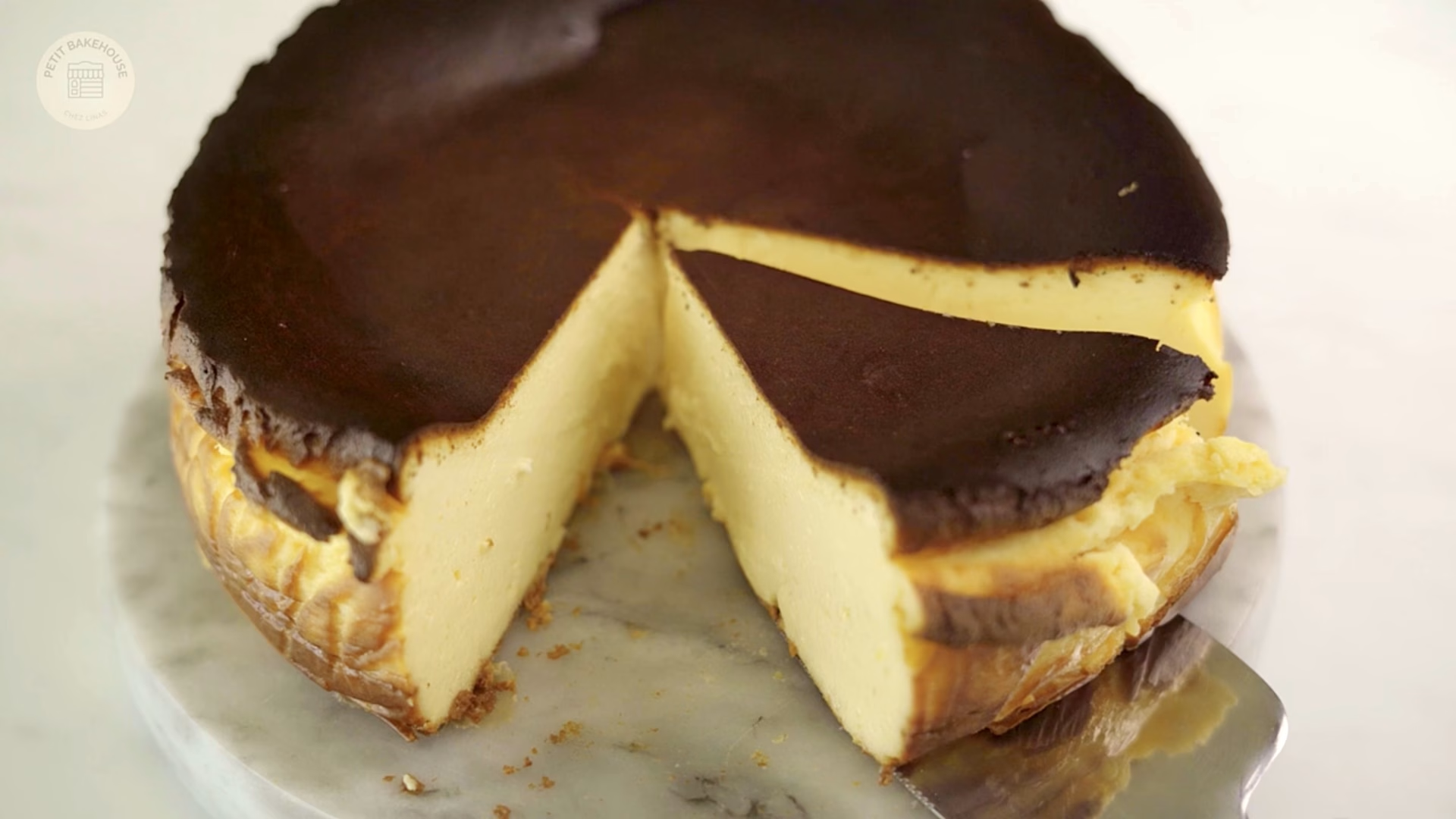
Leave a Reply